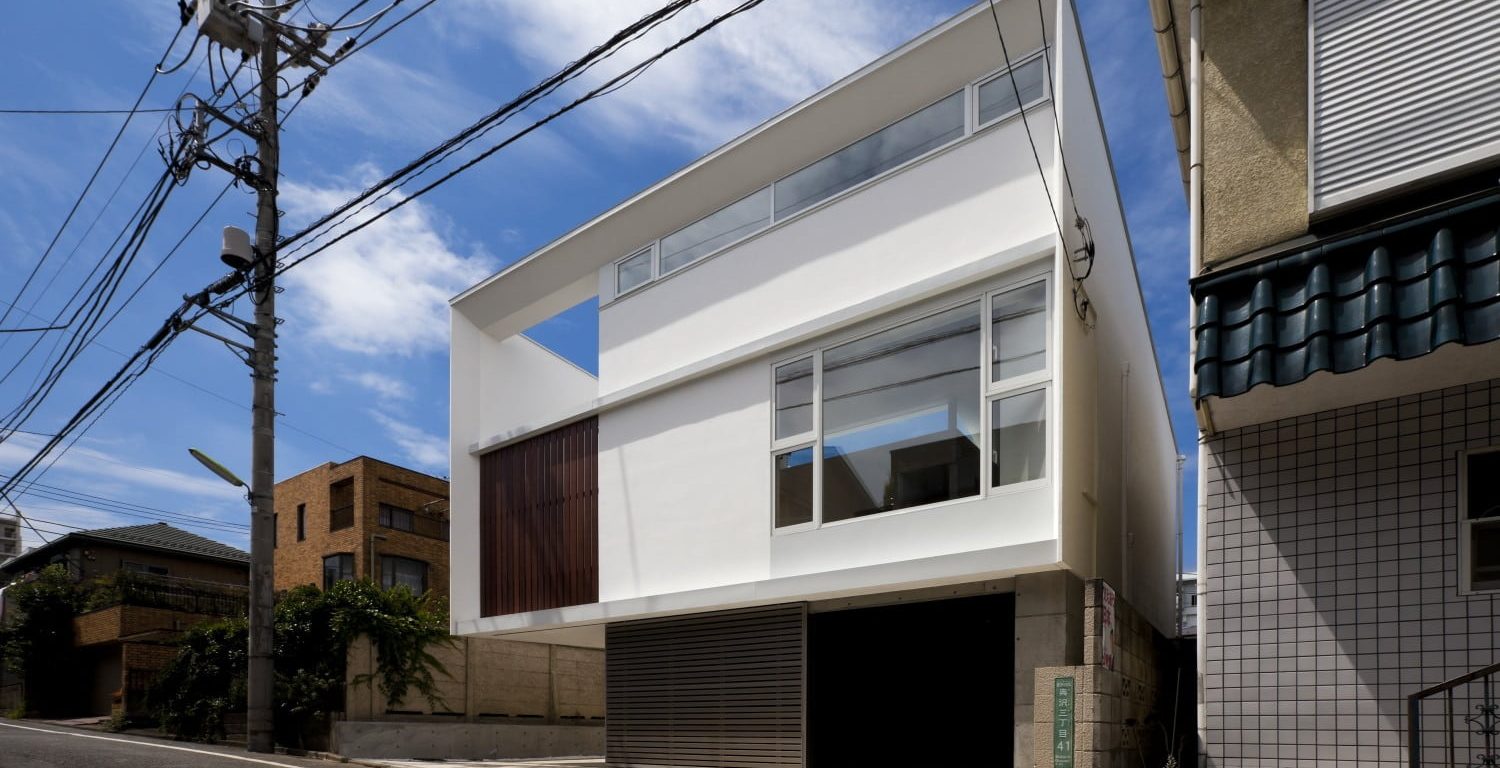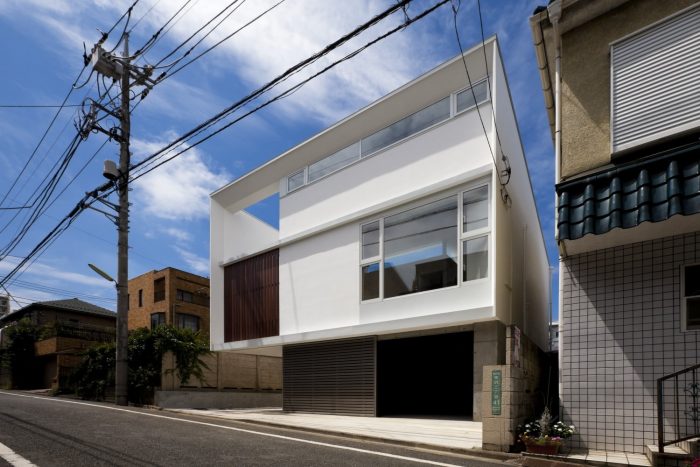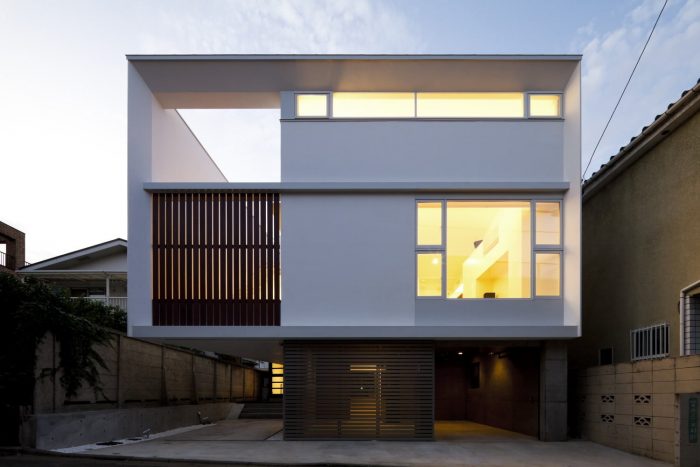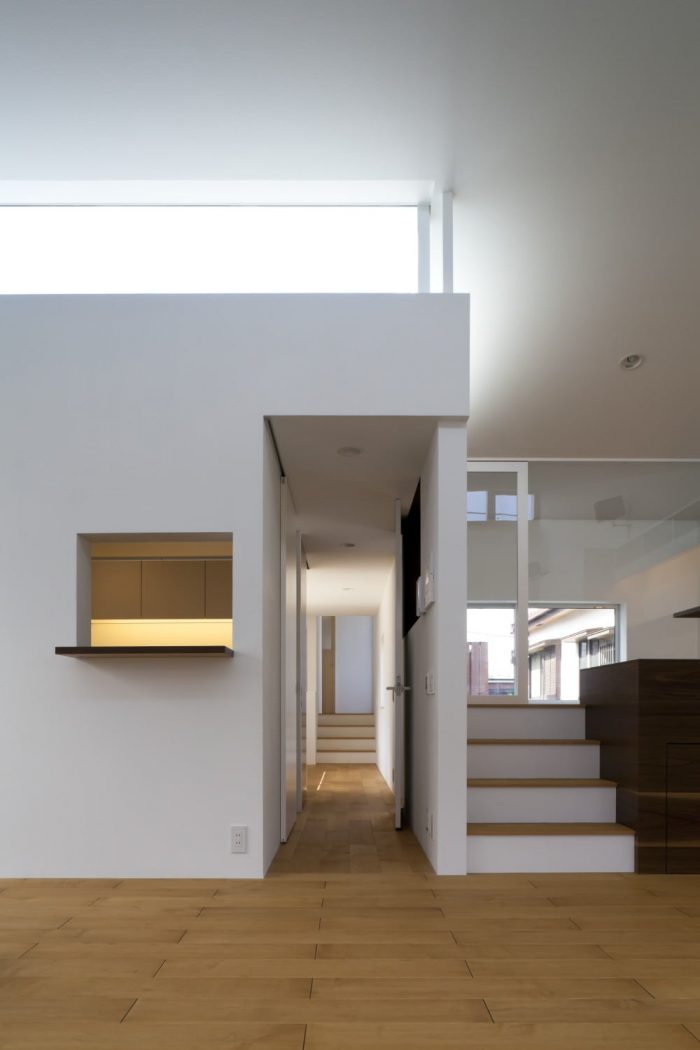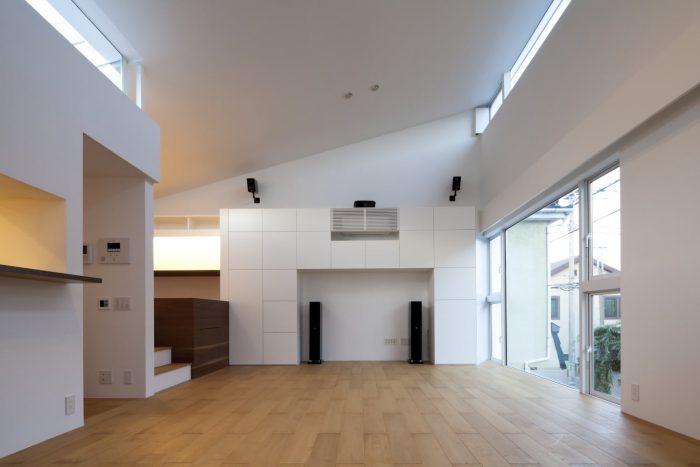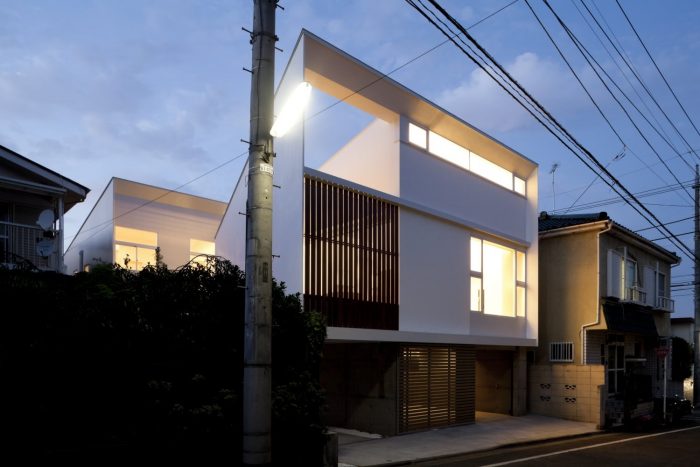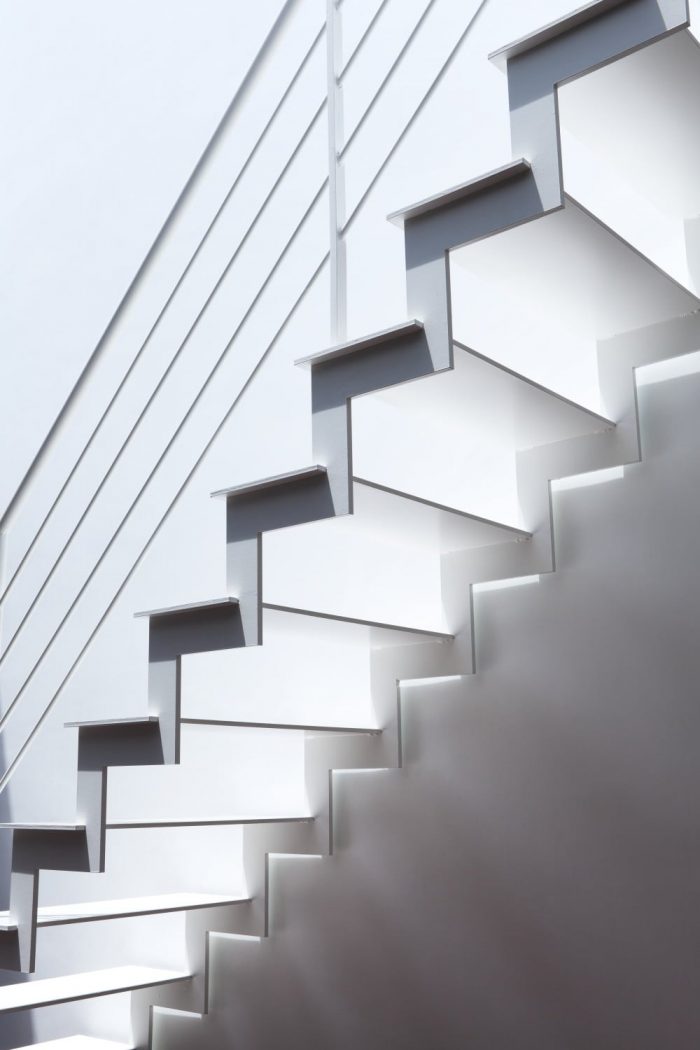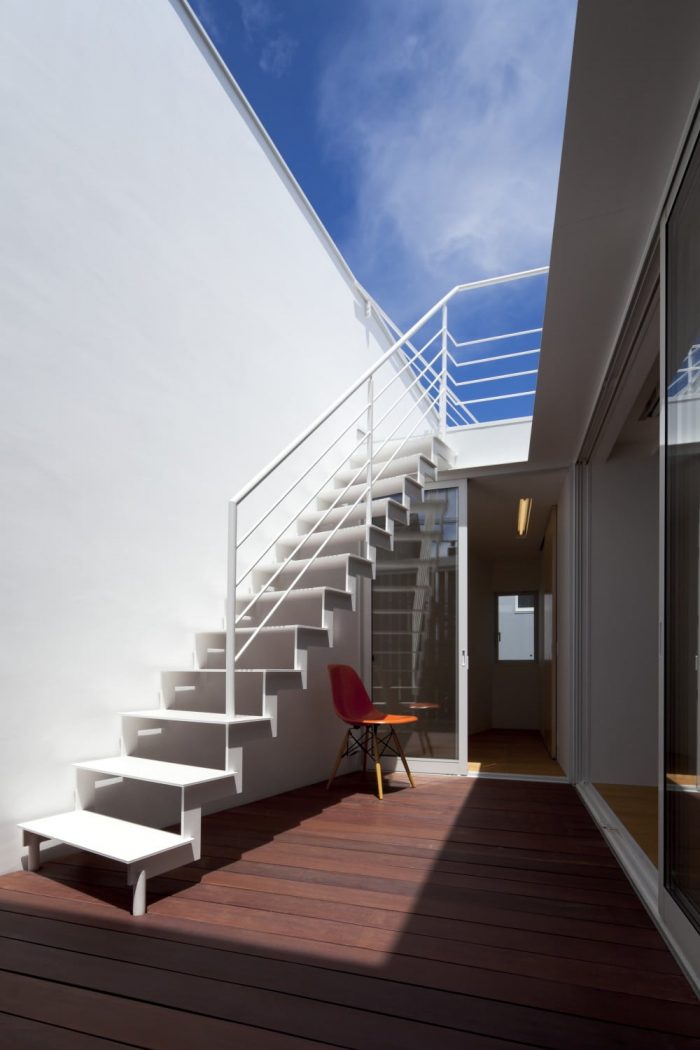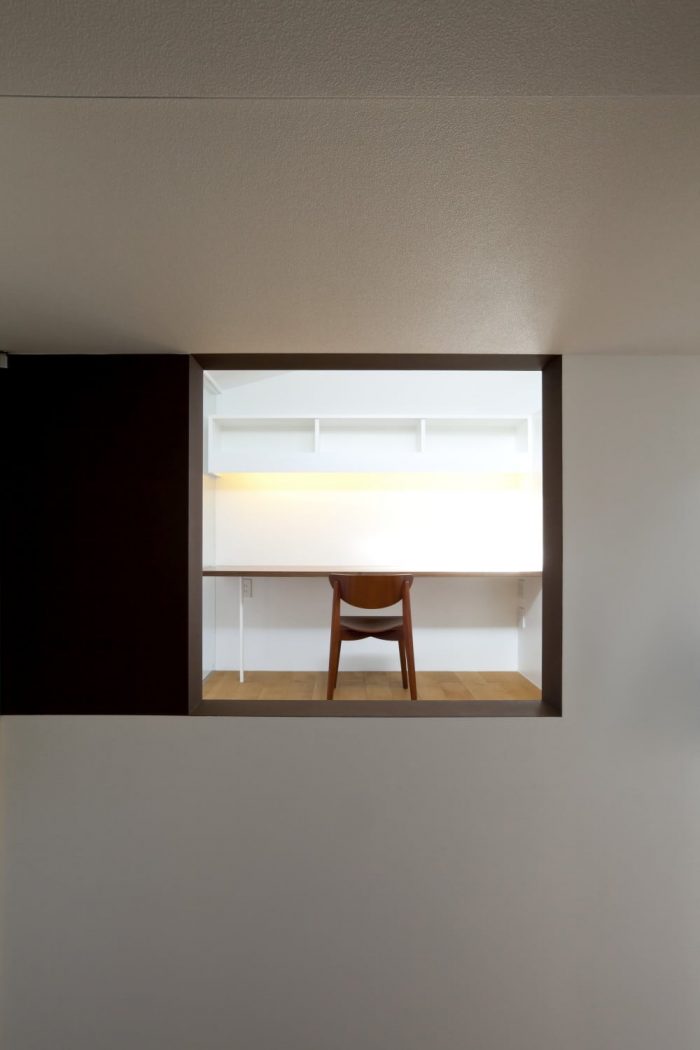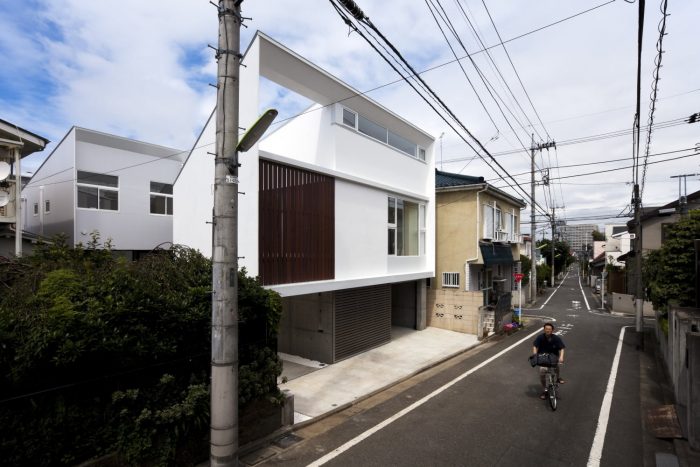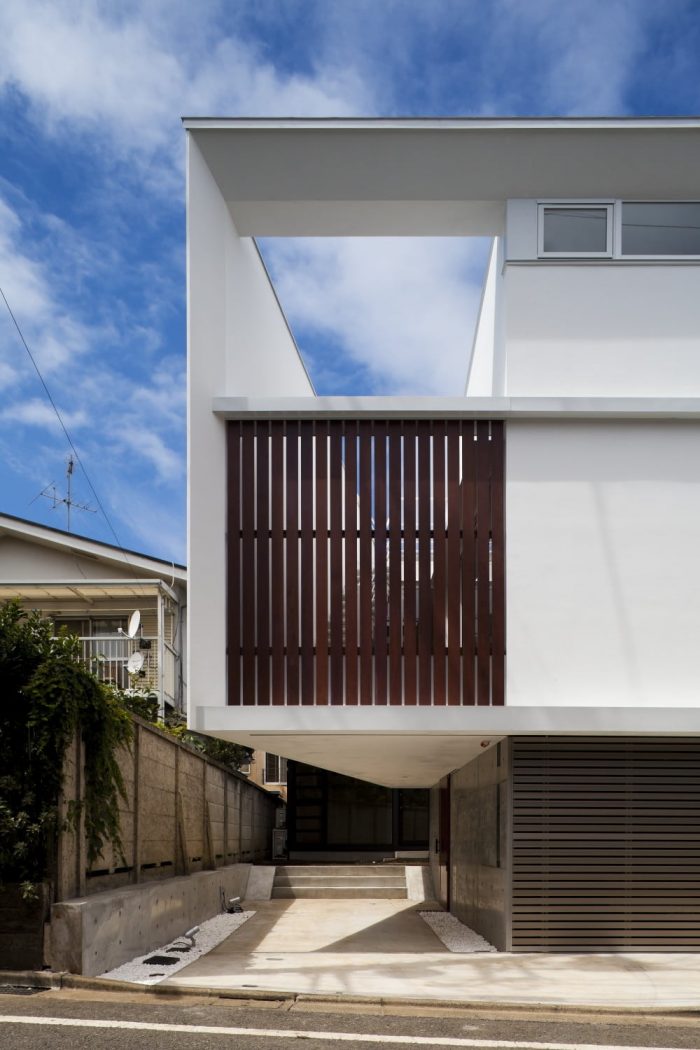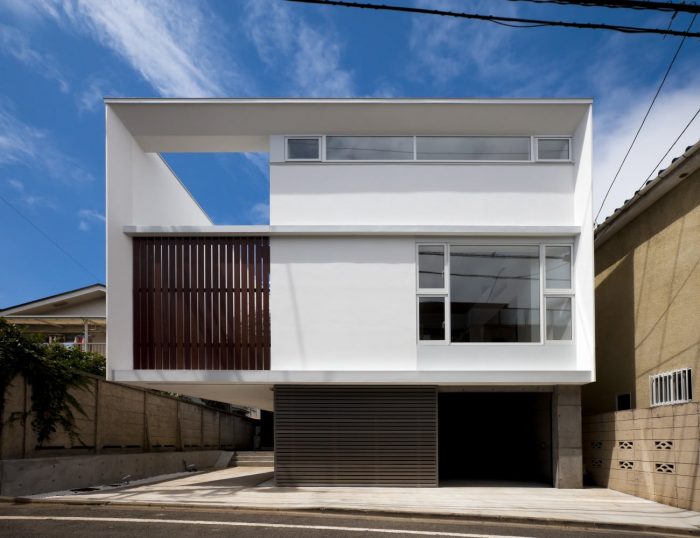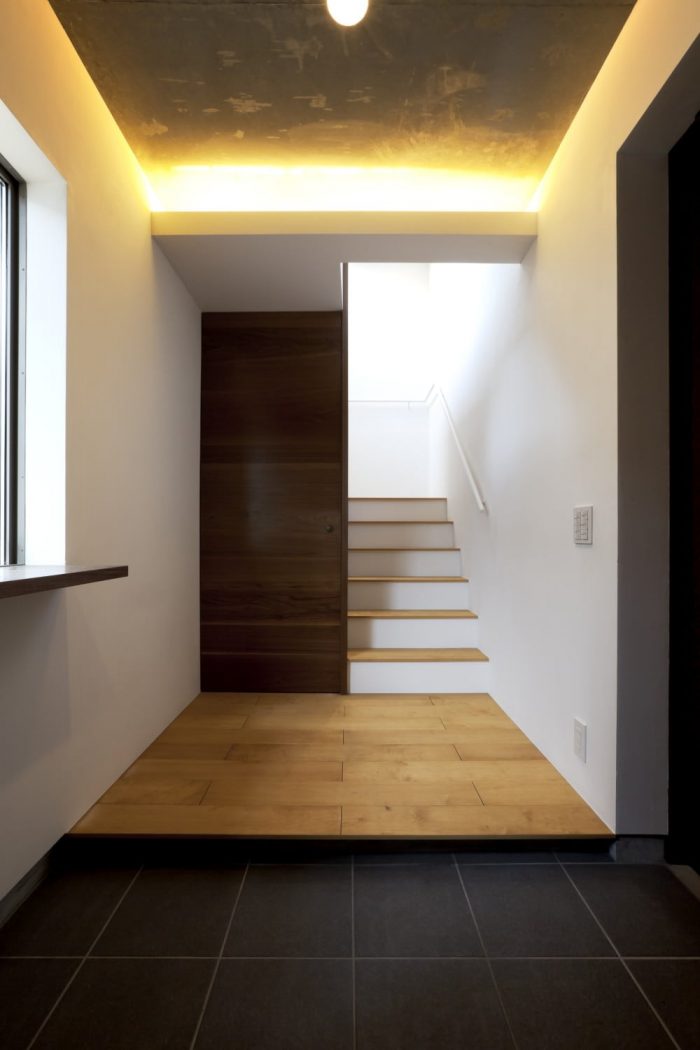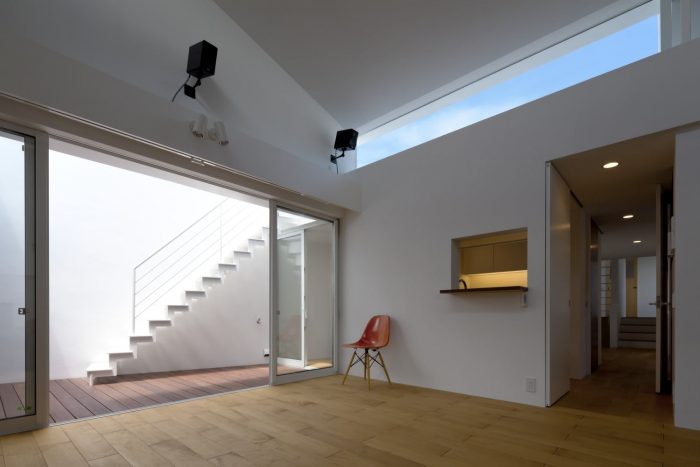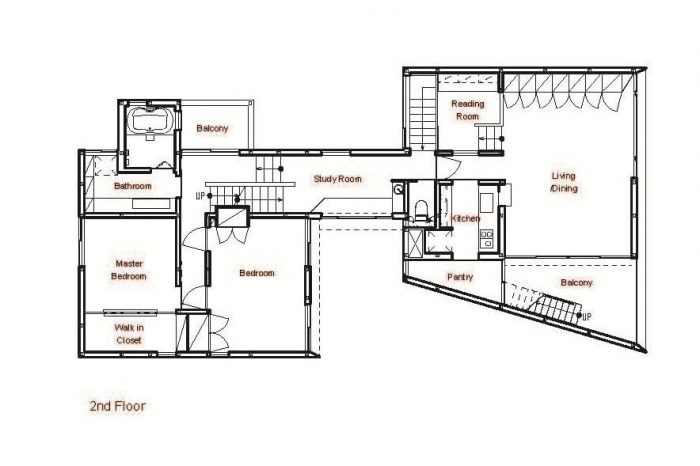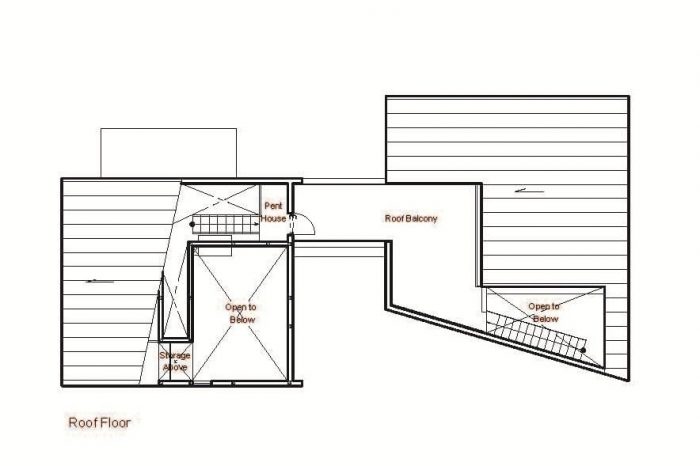在日语中,shitsurae这个词的意思是 “安装 “或 “安排”。简而言之,它意味着以适合其性质和创造美感的方式安排一个特定的物体或情况。例如,日本茶道中使用的茶碗很难用工业化的手段来制造。用粘土工作的艺术家通过试验和错误的过程来生产这些碗,使它们能够舒适和自然地适合人类的手。这个过程就是shitsurae的意思的一个例子。在日本,事情要经过多次编辑和修改;有无数种方法来实现舒适,而这个过程需要不小的时间。
In Japanese, the word shitsurae means “installation” or “arrangement.” To simplify a bit, it means to arrange a given object or situation in a way that suits its nature and creates beauty. For example, it is difficult to manufacture the tea bowls used in the Japanese tea ceremony by means of an industrial process. Artists who work in clay produce these bowls by means of a process of trial and error so that they fit comfortably and naturally into human hands. This process is an example of what is meant by shitsurae. Things are edited and revised in Japan many times over; there are countless ways to achieve comfort, and the process takes no small amount of time.
这个项目的设计花了两年半的时间。通常情况下,设计这样规模的住宅需要八个月到一年的时间,但我们花了两到三倍的时间。较长的设计时间反映了这样一个事实:我们花了大量的时间来研究将住在这所房子里的家庭的需求和要求,同时在建筑的背景下思考功能。我希望这个结构在目前和将来都能对这个家庭产生更好的影响,因为客户是一对四十多岁的夫妇,他们对我的房子和他们五岁和八岁的女儿非常感兴趣,他们告诉我,他们希望能一起享受创作过程。我们进行了无数次的谈话,讨论这个家庭真正想要的是什么,以及他们希望享受什么样的生活方式。我们画了图,并深入探讨了各种功能,我们发现的答案可以在这个计划和横断面中找到。
The design of this project took two and a half years. Normally, it takes from eight months to a year to design a residence of this size, but we spent from two to three times that long. The longer design period reflects the fact that we took plenty of time to examine the needs and requests of the family that was to live in the house while thinking about functionality in the context of architecture. I wanted the structure to exert a better influence on this family both currently and in the future because the clients, a couple in their forties who were extremely interested in my homes and their five- and eight-year-old daughters, had told me that they wished to enjoy the creative process together. We had countless conversations about what the family truly wanted and what kind of lifestyle they wished to enjoy. We drew diagrams and explored a variety of features in depth, and the answers we discovered can be found in this plan and cross-section.
这个过程从发现地块的形状和大小以及土地的潜力开始。我们选择的地块,位于东京的一个高档社区,比通常的尺寸要大。它呈南北走向,两边都临近道路。在得到地块中间有高低变化的条件后,我们想方设法合理有效地让光线和风进入,因为这两个元素给家庭带来的是永恒的舒适。因此,我们最终设计了一个由两个梯形体组成的结构,在平面和立面上都有所偏移,并由一座桥连接。通过让东边和南边的光线进入,但不让它进入结构的西边,我们能够限制晚上的闷热,而且我们能够采取创造性的方法,让风从不同的侧面进入,这正是因为我们在住宅设计上花了很多时间。我们还在一楼和二楼以及屋顶带来了类似于莫比乌斯带的流动线,这样居住者就可以在室内和室外的空间中来回穿梭,错综复杂,无拘无束。这是一种在功能上保持灵活性的技术,随着时间的推移而一起变化。
The process began with the discovery of the shape and size of the plot and the potential of the land. The site we chose, which is located in an upscale neighborhood in Tokyo, is larger than the usual size. It runs north-south, with both sides fronting on roads. Having been given the condition that the plot have a change in elevation in the middle, we sought ways to rationally and effectively let in light and wind due to the timeless comfort that these two elements convey to the family. As a result, we ended up with a structure consisting of two trapezoidal volumes offset in terms of both plan and elevation and connected by a bridge. By letting light in on the eastern and southern sides but keeping it out on the western side of the structure, we were able to limit mugginess in the evenings, and we were able to take a creative approach to allowing wind in from various sides precisely because we spent so much time on the design of the home. We also brought flow lines resembling a Mobius strip to the first and second floors as well as the rooftop so that the occupants could move back and forth between the interior and exterior spaces in an intricate and limitless fashion. This is a technique for preserving flexibility in functionality that changes together with the passage of time.
虽然没有炫耀或浮夸,但作为一个非常适合其位置和家庭的住宅,该结构表现出了高度的完整性。
While not showy or flamboyant, the structure exhibits a high degree of completeness as a home that is ideally suited to its location and family.
Architects: Atelier Tekuto, Yasuhiro Yamashita + Toshiyuki Fujimori
Area : 118 m²
Year : 2011
Photographs :Toshihiro Sobajima
City:Tokyo
Country:Japan

